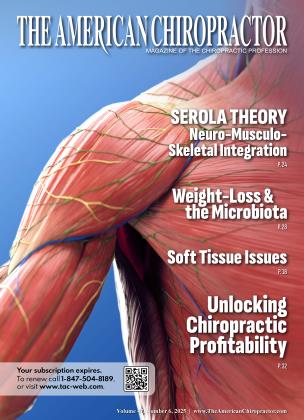Why AI-Driven Injury Claim Auditing Is a Game-Changer
June 1 2025 Frank LibertiWhy AI-Driven Injury Claim Auditing Is a Game-Changer
June 1 2025 Frank Liberti
In today’s fast-evolving personal injury landscape, chiropractors must do more than just provide treatment. They must deliver data-driven, legally defensible documentation that ensures fair compensation for patients and strengthens attorney relationships. However, many personal injury chiropractors still rely on outdated methods such as EHRs, ChatGPT, NLP, and legacy systems that fail to capture the full scope of an injury, leaving critical valuation gaps in claims.
The legal and insurance industries have evolved, leveraging data-driven assessments to challenge claims and undervalue settlements. Attorneys and insurers demand quantifiable proof of injury impact, but traditional assessment methods often lack the comprehensive depth required to meet these standards.
A breakthrough in injury claim auditing now enables chiropractors to document cases with unparalleled precision, uncovering key noneconomic damages that traditional assessments miss. This new approach strengthens injury claims by:
• Identifying Overlooked Damages: Pain and suffering, emotional and cognitive distress, and diminished quality of life — critical noneconomic damage elements — are often left unaccounted for in standard assessments. Al-driven auditing ensures these are properly quantified and integrated into injury claims.
• Leveraging Trauma Inventories and Remote Surveys: By utilizing electronic patient reporting outcomes, or EPROs, this process captures detailed, patient-reported impairments that illustrate the full scope of an injury’s impact on daily life. This information provides a robust foundation for legal demands, ensuring that all aspects of an injury are considered.
• Delivering Clinical Economic Calculations: Injury assessments now integrate federal expectancy data with “dollar-of-the-day” values and “time-use surveys” to translate complex impairments into precise financial valuations. This allows for accurate monetary representation of loss of services across eight federal categories.
• Generating Double-Digit Diagnoses: Ai-assisted clinical decision support systems (CDSS) identify missed diagnoses that further substantiate claim value, meeting legal sufficiency challenges with objective data.
• Providing Legally Validated Impairment Ratings: Whole-person impairment (WPI) ratings are key in quantifying injury severity; without them, claims are vulnerable to disputes and reductions. Ai-generated impairment ratings provide the legal benchmarks insurers and attorneys require.
• Ensuring Legal Defensibility: Each injury claim audit undergoes a reproducibility validation process, ensuring findings are legally defensible and withstand scrutiny from opposing examiners.
The landscape of personal injury is shifting. Attorneys are now prioritizing chiropractors who provide treatment and data-backed assessments that hold weight in negotiations and litigation. Chiropractors who fail to evolve risk losing referrals and credibility in an increasingly competitive field.
Patients also expect more. They rely on chiropractors for care and accurate, comprehensive documentation that ensures their injuries are fairly represented in legal proceedings.
This new approach to injury claim auditing seamlessly integrates into chiropractic workflows, enhancing documentation without disrupting treatment. Chiropractors who leverage this methodology will:
• Expand attorney referral networks by providing the injury claim audit reports with enhanced valuation that attorneys need to justify stronger settlements.
• Increase revenue streams through new injury assessment procedures that add measurable value to claims. EPros bill at $209; impairment ratings bill at $459; and audit reports bill at $450.
• Ensure patients receive fair compensation by equipping them with data-backed, legally sound assessments and documentation that withstand insurer scrutiny.
Personal injury is no longer just about treatment. It’s about providing legally sound, data-driven evidence that supports stronger injury claims. Chiropractors who embrace Al-driven auditing will be at the forefront of personal injury care, ensuring that their expertise is indispensable in legal and insurance negotiations.
The field has changed. Chiropractors now have the opportunity to lead that change.

Dr. Frank Liberti has a career spanning 45 years. His advice on personal injury has been published extensively and his work has appeared in broadcasts of NBC, CNN as well as Entrepreneur Magazine. He has consulted over 35,000 doctors and lawyers on the subject of personal injury and is a keynote speaker on personal injury across the United States. For more information on implementing Al-driven impairment rating tools into your practice visit www.aidrivenpi.com or contact Dr. Frank Liberti at [email protected].
 View Full Issue
View Full Issue









